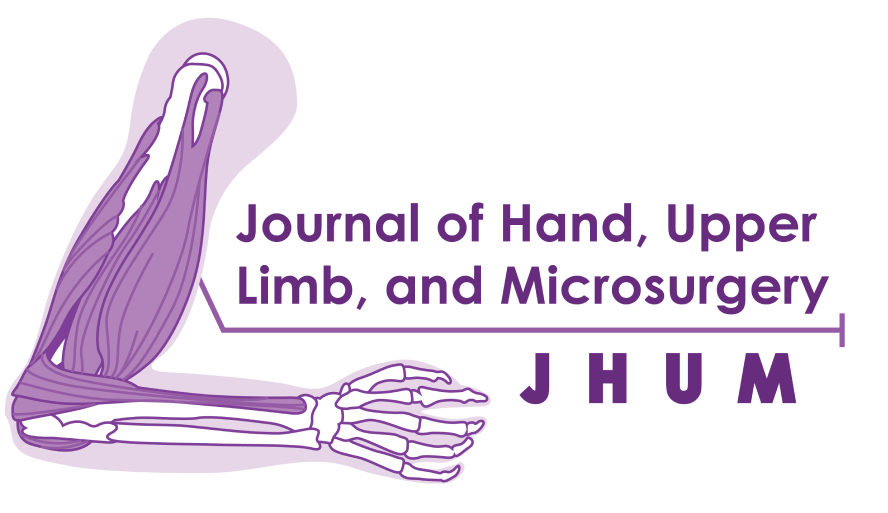End-to-Side Neurorrhaphy for Brachial Plexus Injury
A Systematic Review
DOI:
https://doi.org/10.59452/jhum.v1i2.108Keywords:
brachial plexus injury, end-to-side neurorrhaphy, functional outcomeAbstract
Background
Brachial plexus injury is one of the most challenging cases in the microsurgery field, due to complexity of its anatomy and the significance of its function. End-to-side neurorrhaphy (ETS) has lately been developed as an option for the reconstruction of this injury, due to its reported minimal donor nerve morbidity. However, its effectivity is still debatable due to varying reported outcome. This systematic review aims to investigate the efficacy of this promising technique.
Methods
We comprehensively searched PubMed and Google Scholar to search previous studies on end-to-side neurorrhaphy up to August 26th, 2019 which resulted in 128 articles. Review by two independent authors resulted in 5 articles for systematic review.
Results
The efficacy of ETS varies among the included studies, with success rate ranging from 0% to 100%, with combined success rate of 43%. The most commonly attributed advantage of ETS is the minimal or absence of donor nerve morbidity. While there is one author recommended ETS for axillary nerve repair if no nerve transfer donor available, two authors do not recommend ETS, and preferred nerve transfer/grafting. One author has reported synkinesis of the muscles innervated by donor and recipient nerve.
Conclusion
ETS is a new procedure to mitigate the risk of failed reinnervation in brachial plexus injury with minimal risk of donor nerve morbidity compared to nerve transfer. However, its efficacy is still lower than other procedures more commonly used, thus its use has not been recommended.

